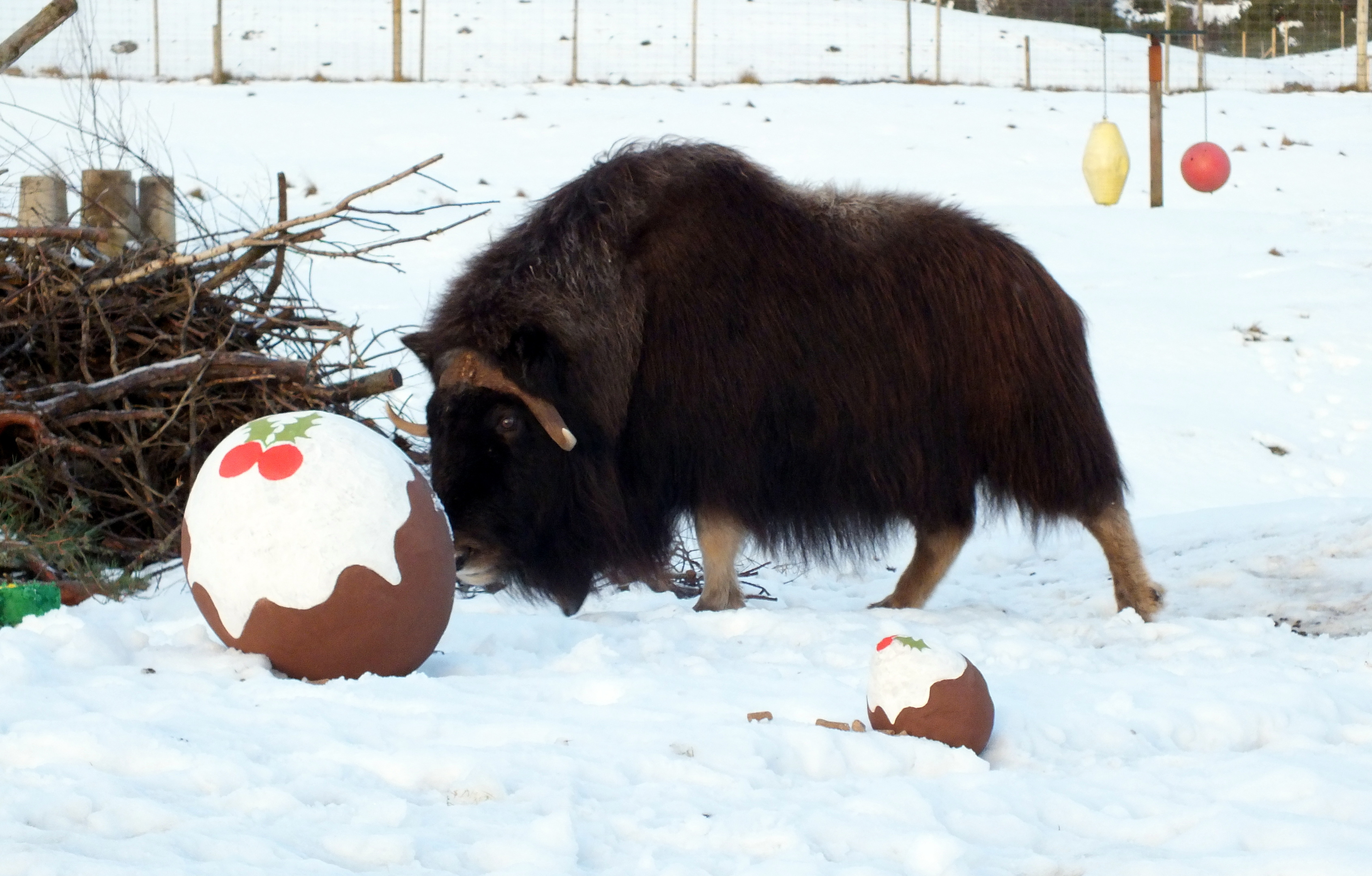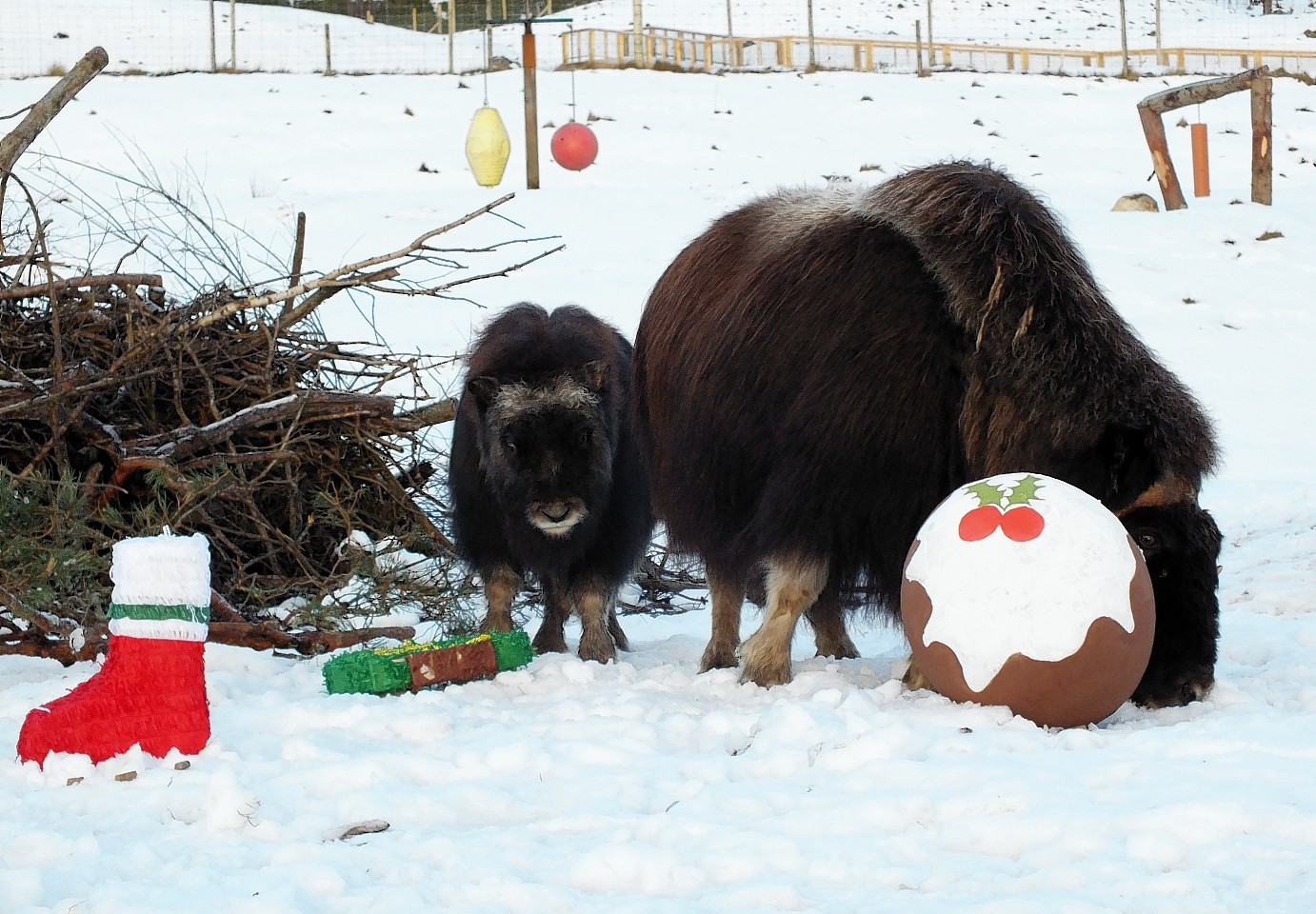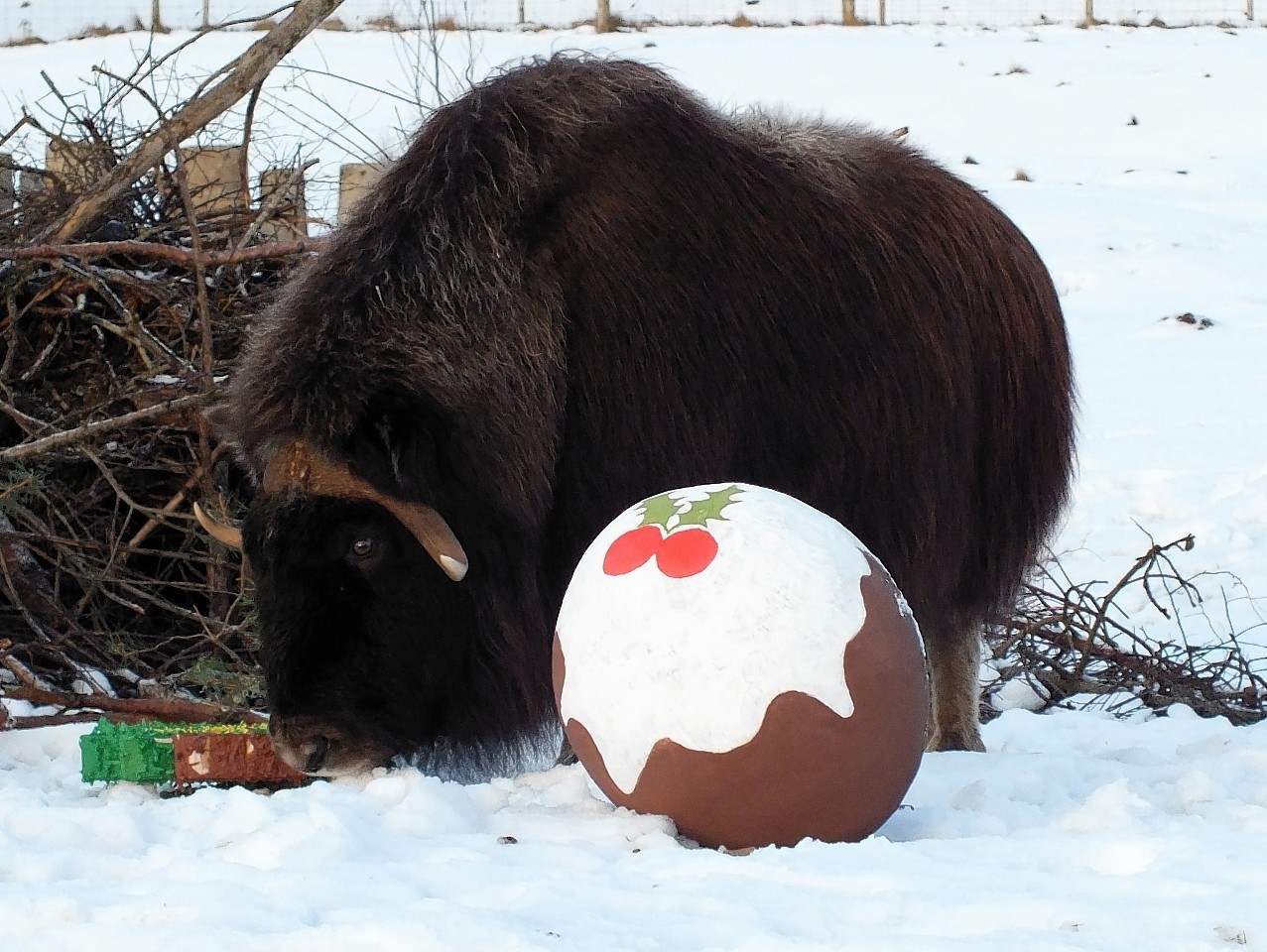Like any young lad, Boeuf the musk ox likes nothing better than a kickabout with a ball.
And as a special treat, his “football” from workers at the Highland Wildlife Park near Aviemore was disguised as a seasonal Christmas pudding yesterday.
The six month old Boeuf played with the specially made papier-mache balls painted to look like festive puddings, charging and butting them and generally having a good time while his mother looked on.
Born on June 2 this year to mother Karin and father Myse, Boeuf is a real success story for the Park. Musk ox are notoriously difficult to breed due to high neonatal mortality rates and a low tolerance to parasites, with the last musk ox calf to survive until adulthood in the UK born in 1992.
Wet weather can also make calves in particular susceptible to pneumonia.
However a combination of conservation regulation, reintroducing the special to some areas, plus natural recolonisation means musk ox are now classified as being of least concern on the red list of threatened species.
Morag Sellar, head keeper of hoofed-stock at Highland Wildlife Park, said: “We are thrilled that our attention to detail has helped Boeuf get through the first six months of his life. We slowly introduced Boeuf to his father as the inherent aggressiveness of the adults, particularly the adult males, further complicates the situation for the young.”
Boeuf, although small just now, could grow to weigh an impressive 660lbs when fully mature.
His thick coat with its inner layer of qiviut wool, said to be eight times warmer than sheep wool, is developing well.
Musk ox in the wild typically form mixed herds of around 10 to 20 animals but they can sometimes contain as many as 100.
They were hunted nearly to extinction for their fur and meat.
The common name of the species is said to come from a characteristic odour produced by the male during mating season.


